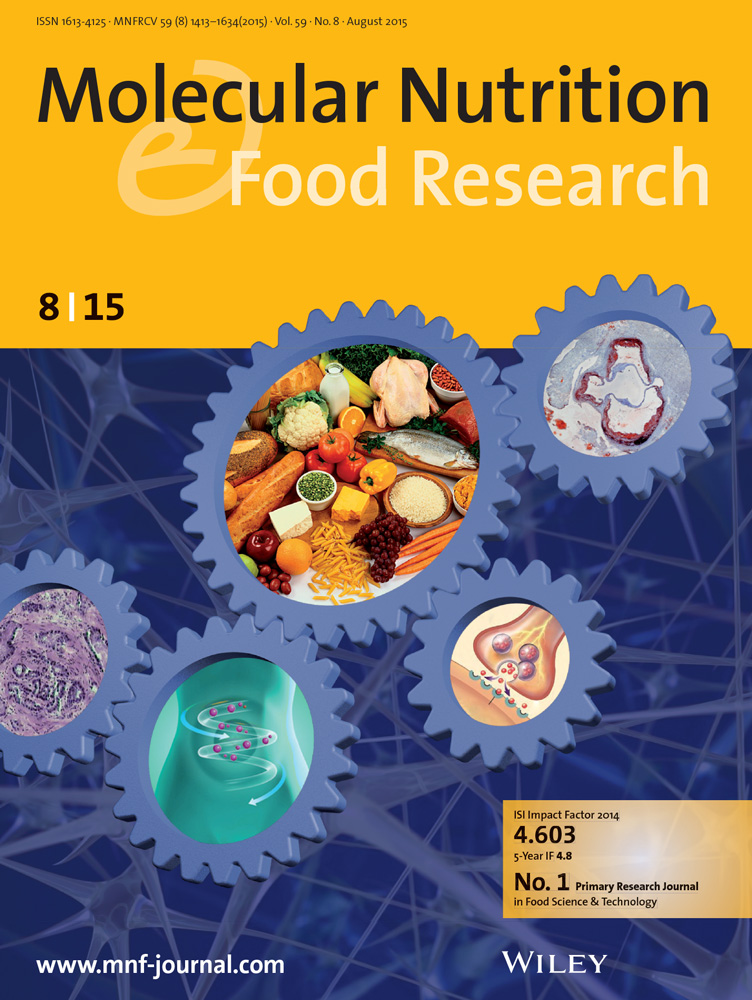Postprandial Responses to Meals Enriched With Canola or Coconut Oil in Men and Women With a Risk Phenotype for Cardiometabolic Diseases: A Randomized Crossover Trial.
IF 4.2
2区 农林科学
Q1 FOOD SCIENCE & TECHNOLOGY
引用次数: 0
Abstract
We investigated the metabolic response to meals with canola or coconut oil (rich in unsaturated vs. rich in saturated fatty acids [FAs]). Although the longer-term metabolic effects of these fats are well evidenced, their postprandial effects remain inconclusive. In this randomized crossover trial, 29 participants with increased cardiometabolic risk consumed four isoenergetic meals containing 25 or 50 g (low-fat meals [LFMs], high-fat meals [HFMs]) of canola or coconut oil. Blood samples for analysis of triglycerides (TGs), glucose, insulin, nonesterified FAs (NEFAs), IL-6, and individual FAs were collected in the fasting state and 6 h postprandially (every 0.5-1 h). The incremental areas under the curves (iAUCs) of TGs and IL-6 were higher after canola than after coconut oil. Concentrations of lauric and myristic acid were higher after coconut oil, while concentrations of oleic, linoleic, and α-linolenic acid were higher after canola oil. The TG iAUC was higher after HFMs than after corresponding LFMs. NEFAs decreased more after LFMs than after HFMs. The glucose and insulin iAUCs were higher after LFMs than after HFMs. Canola and coconut oil induced different metabolic responses. The manner and strength of the postprandial effects differed depending on the parameter.具有心脏代谢疾病风险表型的男性和女性对富含菜籽油或椰子油的膳食的餐后反应:一项随机交叉试验
我们研究了食用菜籽油或椰子油(富含不饱和脂肪酸和富含饱和脂肪酸[FAs])后的代谢反应。虽然这些脂肪的长期代谢影响已得到充分证明,但它们的餐后影响仍不确定。在这项随机交叉试验中,29名心脏代谢风险增加的参与者食用了四顿含25或50克菜籽油或椰子油的等能餐(低脂餐[LFMs],高脂餐[HFMs])。空腹和餐后6 h(每0.5-1 h)采集血样分析甘油三酯(TGs)、葡萄糖、胰岛素、非酯化FAs (NEFAs)、IL-6和个体FAs。菜籽油处理后,TGs和IL-6的曲线下增量面积(iAUCs)高于椰子油处理。椰子油处理后的月桂酸和肉豆蔻酸浓度较高,菜籽油处理后的油酸、亚油酸和α-亚麻酸浓度较高。HFMs后TG - auc高于相应的LFMs。与HFMs相比,LFMs后NEFAs的下降幅度更大。葡萄糖和胰岛素的iAUCs在低剂量治疗后高于高剂量治疗。菜籽油和椰子油诱导的代谢反应不同。餐后效应的方式和强度因参数的不同而不同。
本文章由计算机程序翻译,如有差异,请以英文原文为准。
求助全文
约1分钟内获得全文
求助全文
来源期刊

Molecular Nutrition & Food Research
工程技术-食品科技
CiteScore
8.70
自引率
1.90%
发文量
250
审稿时长
1.7 months
期刊介绍:
Molecular Nutrition & Food Research is a primary research journal devoted to health, safety and all aspects of molecular nutrition such as nutritional biochemistry, nutrigenomics and metabolomics aiming to link the information arising from related disciplines:
Bioactivity: Nutritional and medical effects of food constituents including bioavailability and kinetics.
Immunology: Understanding the interactions of food and the immune system.
Microbiology: Food spoilage, food pathogens, chemical and physical approaches of fermented foods and novel microbial processes.
Chemistry: Isolation and analysis of bioactive food ingredients while considering environmental aspects.
 求助内容:
求助内容: 应助结果提醒方式:
应助结果提醒方式:


